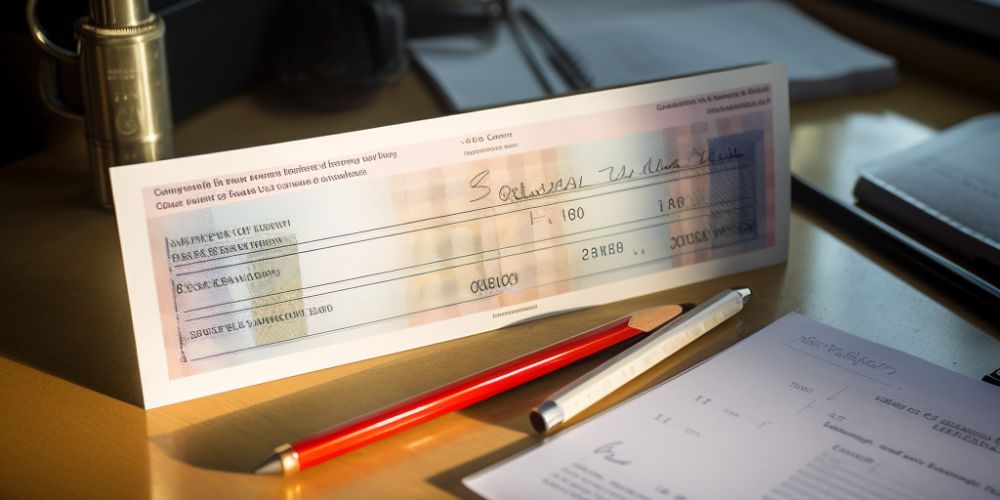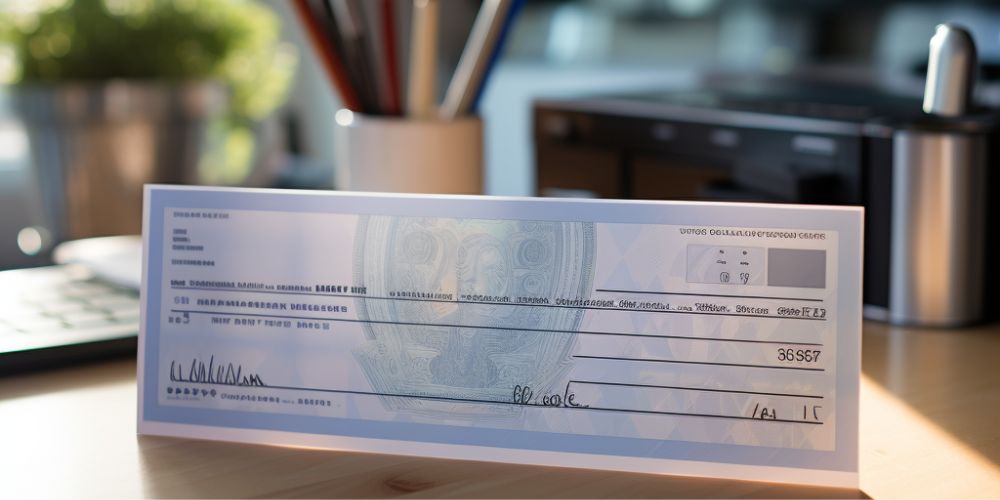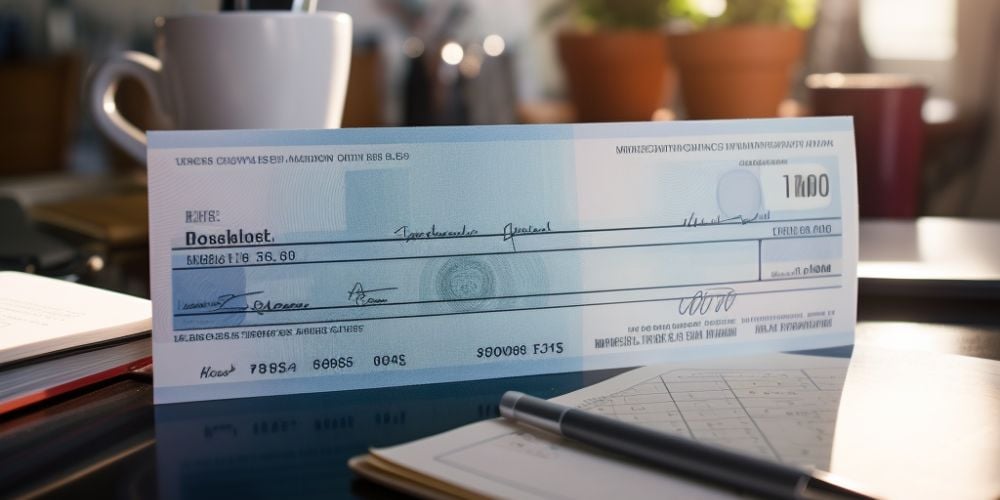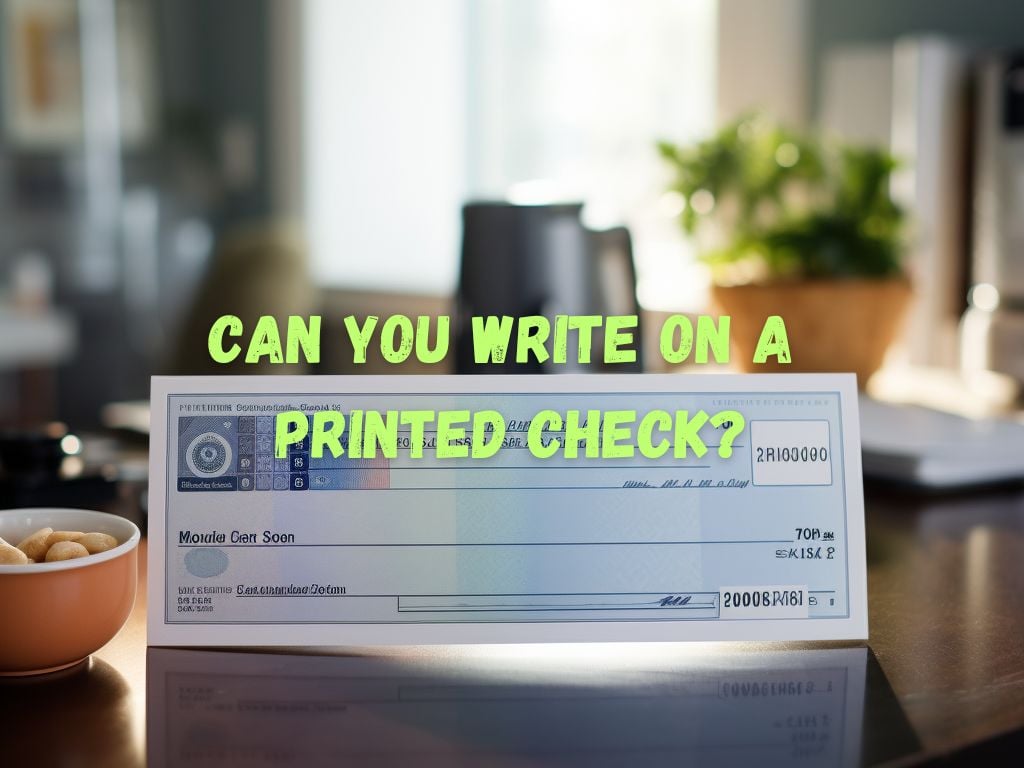When it comes to managing financial transactions, checks remain a popular method. However, there might be moments when you need to write on a printed check to add some information.
In this article, we will delve into the intricacies of writing on a printed check, exploring the legality, best practices, and potential pitfalls.
Whether you’ve spotted an error, need to add a note, or just want to make sure you’re doing it right, we’ve got you covered.
What is a Printed Check?
Before diving into the details, let’s clarify what a printed check is.
A printed check is a pre-printed sheet of paper that contains all the essential elements of a check, such as the bank’s information, your account number, and the routing number.
These checks are typically provided by your financial institution and are commonly used for various transactions.

Can You Write on a Printed Check?
When it comes to writing on a printed check, it’s crucial to understand the legality and best practices to ensure compliance and avoid any potential issues.
Let’s explore this topic further by addressing some common questions and providing important points to consider.
Understand the Legality:
Before you start writing on a printed check, it’s essential to be aware of any legal restrictions or guidelines. While different financial institutions may have their own policies, here are some key points to consider:
Check with your financial institution:
Start by contacting your bank or credit union to inquire about their specific policies regarding written alterations on printed checks.
Some institutions may have restrictions or guidelines in place to ensure security and compliance.
Legitimate reasons for writing on a printed check:
Generally, it is considered acceptable to write on a printed check if you are correcting an error, providing additional information, or making a note related to the transaction.
For example, you may need to add a memo indicating the purpose of the payment, or you may need to correct a misspelled name or wrong amount.
Avoid conflicting information:
When writing on a printed check, it’s crucial to ensure that the additional information you add does not contradict the pre-printed details on the check.
The added information should complement the existing contents, not create confusion or raise suspicions.
Considerations Before Writing on a Printed Check:
To ensure a smooth process and avoid potential complications, here are some important considerations before you start writing on a printed check:
Read the terms and conditions:
Familiarize yourself with your financial institution’s terms and conditions related to additional writings on checks. These guidelines can provide valuable insights and specific instructions to follow.
Limitations on ink or instruments:
Some banks may recommend specific ink colors, such as black or blue, to ensure the check remains easily readable, cannot be easily altered, and can be processed accurately. Avoid using inks that may smudge or fade over time.
Space availability:
Check the available space on the printed check before adding any additional information.
Ensure that your writing stays within the designated areas and does not overlap with the pre-printed information.
Writing in a cramped or cluttered manner can cause complications during processing or lead to misinterpretation, so do your best to write clearly.

How to Write on a Printed Check
Now that we know it’s allowed, let’s go through the proper procedure for adding information to a printed check.
Follow these step-by-step guidelines to ensure your written alterations are accurate and comply with banking regulations:
Gather the Required Materials:
A pen with black or blue ink.
A well-lit and distraction-free workspace.
Ensure your hands are clean to prevent smudging or smearing.
Verify the Printed Information:
Double-check all the pre-printed details on the check, including the payee, amount, and date. Accuracy is crucial to avoid confusion or potential issues.
Determine the Necessary Alterations:
Identify the specific reason for writing on the printed check, such as correcting a misspelled name, adding a memo, or providing further details.
Take note of any guidelines outlined by your financial institution to ensure compliance.
Write Neatly and Legibly:
Using a steady hand, write the additional information in the designated space on the check.
Choose a legible and consistent handwriting style to avoid confusion.
Use clear, concise language, and ensure your writing does not overlap with existing printed text or numbers.
Avoid unnecessary marks or alterations:
It’s essential to adhere to a clean and professional approach when writing on a printed check. Avoid making any unnecessary marks or alterations that may raise suspicions or cause complications during processing.
By following these guidelines, you can confidently write on a printed check while maintaining compliance and ensuring a smooth transaction process.
Frequently Asked Questions
Here are some commonly asked questions related to writing on a printed check:
Can you write on a printed check with a pen or pencil?
To ensure your writing is permanent and cannot be easily altered, it is recommended that you use a pen with blue or black ink.
What happens if you make a mistake while writing on a printed check?
Mistakes happen. If you make an error, it’s best to void the check entirely, request a new one, and start the process over. It is not advisable to use correction fluids or strike-throughs, as they can cause confusion and potential complications.
Can you write on a printed check that has already been signed?
It is generally not recommended to write on a printed check after it has been signed, as it may raise suspicions of tampering. If you need to provide additional information, it’s best to request a new check or contact your financial institution for guidance.

Conclusion
In conclusion, you are indeed allowed to write on a printed check, provided you adhere to the proper practices and guidelines.
Always consult your financial institution for specific policies, and ensure your additions are accurate, legible, and do not clash with the printed details.
By following the recommended best practices, you can confidently manage your financial transactions and avoid potential complications when writing on a printed check.


 Tags:
Tags:










